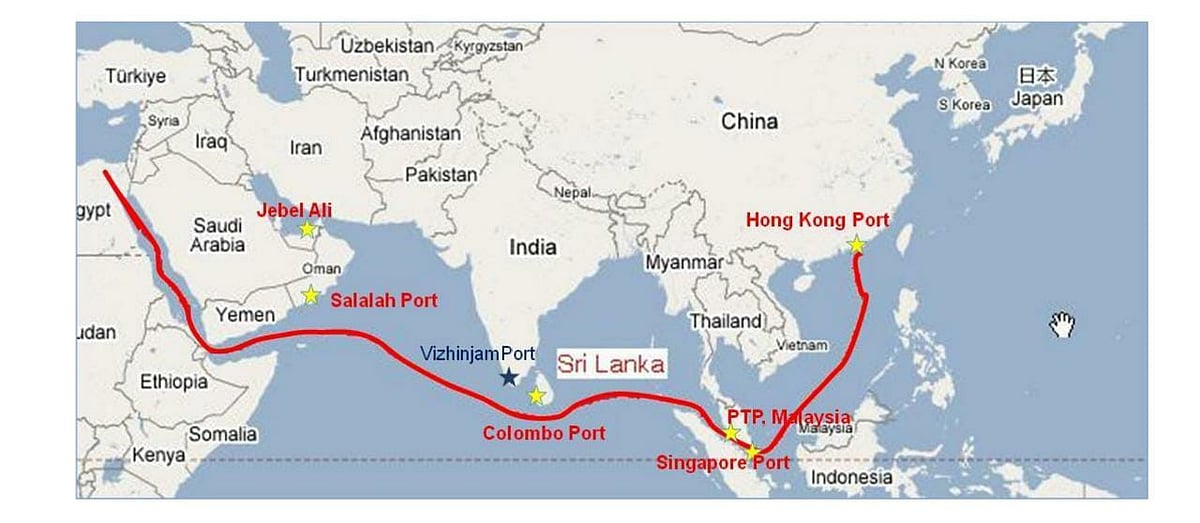Snapshot
The effort to resume the construction of Vizhinjam international port after a halt of over 100 days has faced stiff resistance from protesters led by the church.
Protesters violated the assurances given to the Kerala High Court by blocking the road and stopping the vehicles laden with construction material.
While the latin catholic church is leading the protests to stop construction of the port, some Hindu outfits have started counter protests demanding the project’s timely completion.
Once complete, Vizhinjam will emerge as a significant competition to the transshipment ports of Colombo, Singapore and Dubai as it is the only transshipment hub in the Indian subcontinent.
Violating the assurances given to the Kerala High Court, those protesting against the under-construction Vizhinjam seaport on Saturday (26 November) blocked trucks carrying construction materials to the site.
The protesters, led by the Latin Catholic Church, had on November 22 assured the High Court that they would not block any vehicles coming to the Vizhinjam seaport.
However, on Saturday, hundreds of protesters gathered in front of the gate of the seaport, where the agitators blocked the road by erecting a shed across the road and stopped the vehicles.
The Adani Group, which is constructing the seaport, told PTI that the works restarted today based on the court order. “It’s been 102 days since the work has been halted here due to the protests. We had approached the state High Court, which gave us a favourable ruling. The court had asked us to restart the work but this is the situation today also. Now, let the court take a decision,” a company spokesperson said.
Gaining communal colour
According to a report by The Indian Express, several Hindu organisations like Nair Service Society, Sree Narayana Dharma Paripalana Yogam and Vaikunda Swami Dharma Pracharana have begun counter protests demanding the completion of the port project.

While the catholic church is leading the protests to stop construction of the port, Hindu outfits are demanding the project’s timely completion.
On Saturday, tensions were raised when church-backed protestors blocked over twenty trucks from entering the port construction site and stoned a few trucks. The group supporting the port project reached the construction site and both groups indulged in stone pelting.
Tensions remained high till the trucks were forced to be taken away from the project location.
Earlier, keeping aside their ideological differences, both the ruling communist parties and the opposition BJP have come together and supported the counter protests in support of the port project.

Significance of Vizhinjam Port
The deep-water, multipurpose, international seaport and container transshipment terminal at Vizhinjam is being constructed by Adani Vizhinjam Ports Pvt Ltd (AVPPL). It is expected to boost India’s maritime ambitions significantly.
The port project was signed during the tenure of the Congress-led UDF government led by Chief Minister Oommen Chandy. The Adani Group and the Kerala government signed a Rs 7,525 crore deal, but the project hit several roadblocks and controversies.

Once complete, Vizhinjam will emerge as a significant competition to the transshipment ports of Colombo, Singapore and Dubai as it is the only transshipment hub in the Indian subcontinent, closest to the international shipping routes, and is centrally located on the Indian coastline. It has a natural draft of 20-24 m and minimal littoral drift.
The port will also offer infrastructure to handle Megamax containerships. Its capacity in phase 1 is 1 million TEUs; in subsequent phases, another 6.2 million TEUs will be added.
However the port’s construction was halted for the last four months due to protests led by the church. Further delay in its completion would increase the project’s cost and damage the investment’s confidence, particularly in the crucial coastal state of Kerala.

